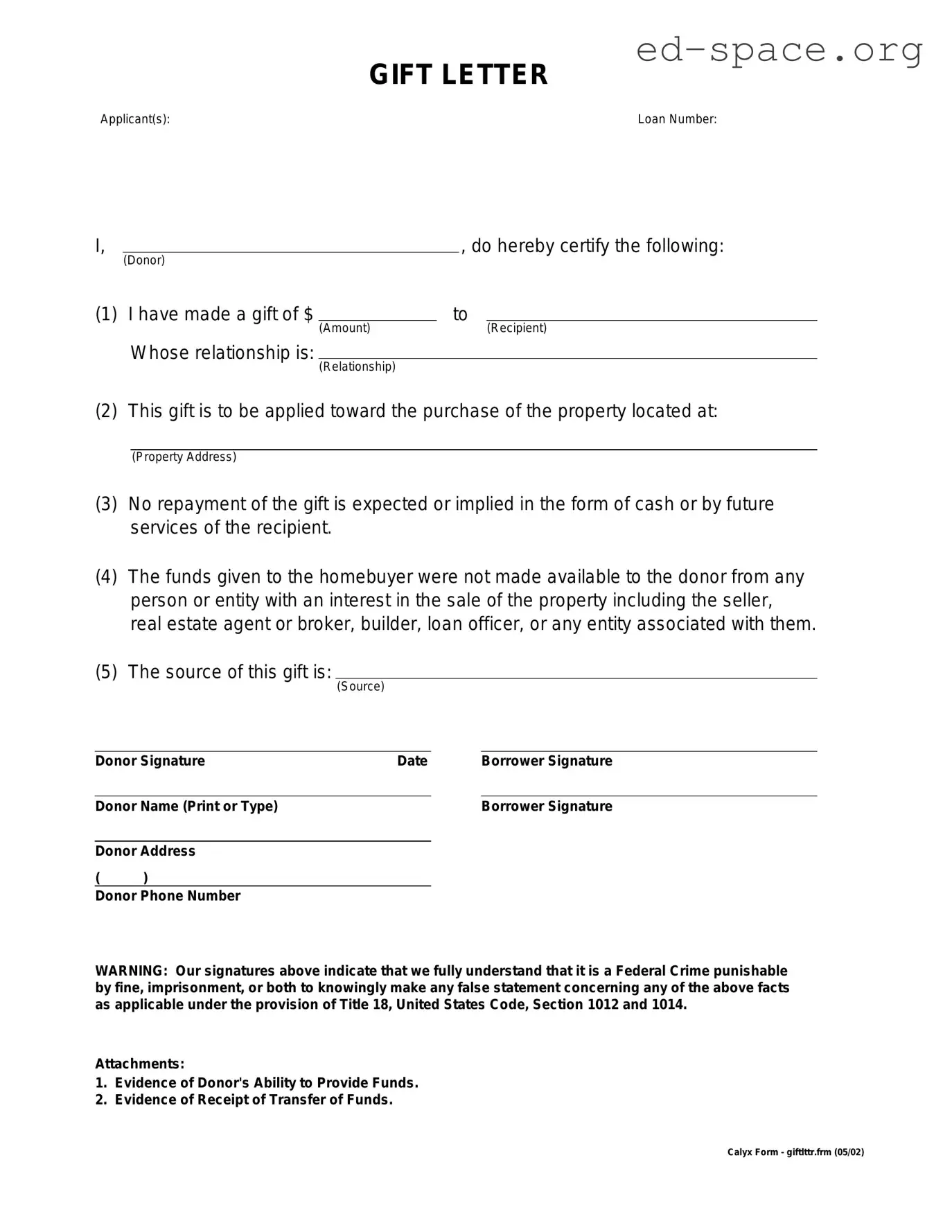What is a Gift Letter and why do I need one?
A Gift Letter is a document that clearly states money received from a friend or family member is a gift, meaning it does not need to be repaid. This letter is often required by lenders to confirm that the funds being used for a down payment on a home, or for any other major purchase, are not an additional loan that could impact the recipient's ability to honor their borrowing agreements.
Who needs to sign the Gift Letter?
The person giving the gift must sign the Gift Letter. This signature is a critical part of the document as it validates the gift's authenticity. Some lenders or legal entities may also require the recipient of the gift to sign the letter, acknowledging the gift and its terms.
Is there specific information that needs to be included in the Gift Letter?
Yes, certain details are essential for the Gift Letter to be considered valid. These include the donor's name and relationship to the recipient, the exact amount of the gift, the date the gift was or will be given, a statement that no repayment is expected or required, and the signatures of all parties involved. Some lenders may also require the letter to include the donor’s contact information and the recipient’s account details where the funds will be deposited.
Can a Gift Letter be handwritten or must it be typed?
While a handwritten Gift Letter may still be accepted by some lenders, a typed letter is generally preferred for clarity and legibility. The most important aspect is that the letter contains all of the required information and signatures. Always check with the lender or legal advisor to confirm their specific requirements.
Does a Gift Letter need to be notarized?
Not all gift letters need to be notarized. However, getting the letter notarized adds an extra layer of authenticity, as it confirms the identity of the signatories. Some lenders or legal situations may require a notarized letter, so it’s best to verify their requirements before proceeding.
Can a Gift Letter affect my taxes?
While the gift letter itself does not directly affect taxes, there are tax implications for large gifts. In the United States, there is an annual exclusion limit for gifts, beyond which the donor must file a gift tax return. The gift letter can serve as evidence that the transfer of funds was a gift if audited by tax authorities. The recipient typically does not have to pay income tax on the gift received.
How long is a Gift Letter valid?
A Gift Letter does not expire, but its relevance is generally limited to the specific transaction it was drafted for. Lenders will usually require the Gift Letter to be dated close to the transaction date to ensure the information is current and reflective of the funds being used for that specific purpose.
Are there legal consequences if it's found out the gift is actually a loan?
If it is discovered that the money was in fact a loan and not a gift, this could constitute fraud, especially if the misrepresented funds influenced a lender's decision to approve a loan or mortgage. This could lead to legal repercussions for both the giver and the receiver, including potential criminal charges for fraud or legal action by the lender to recover the loan based on actual financial standings.

